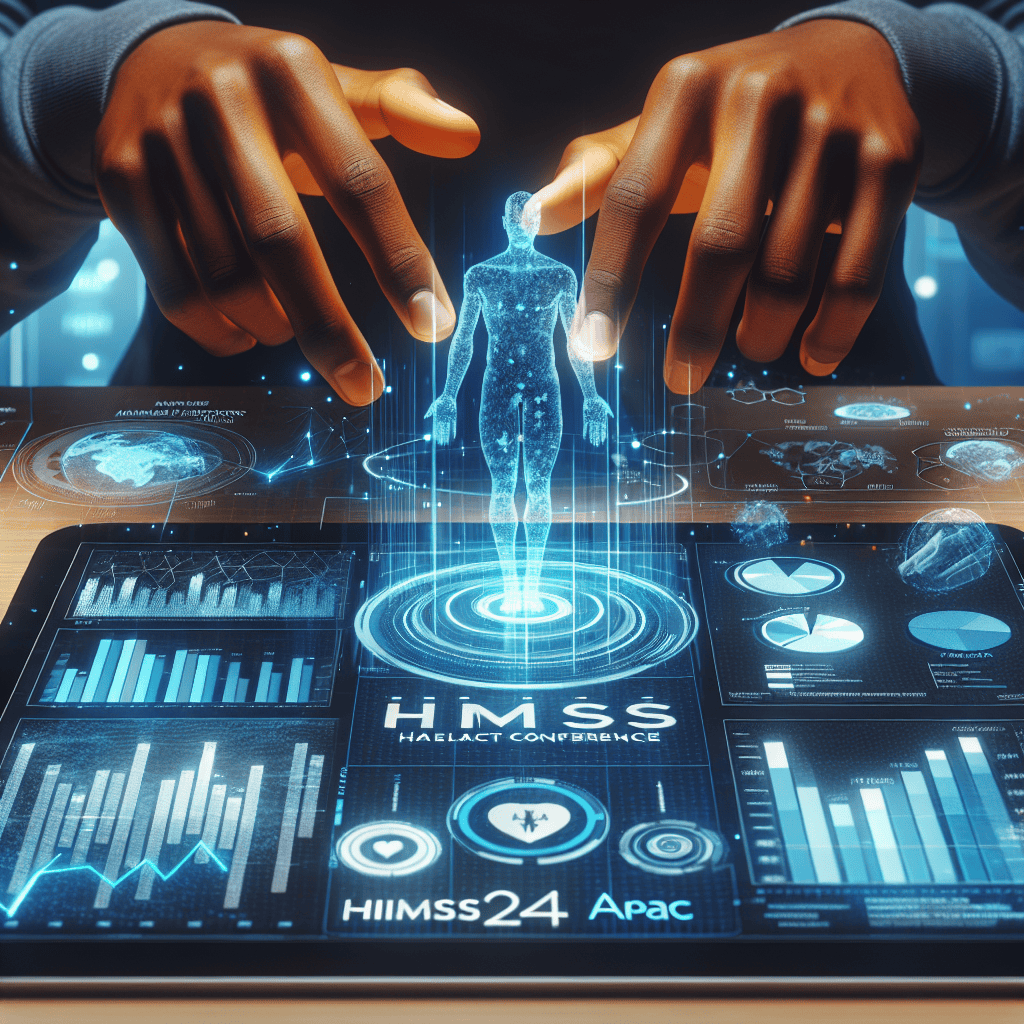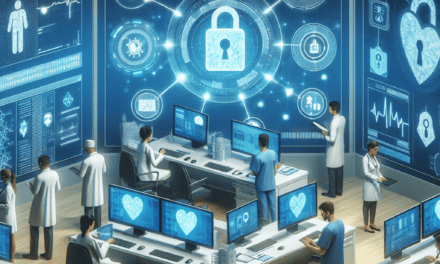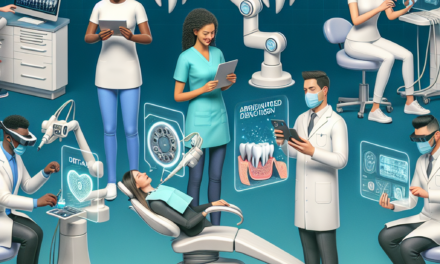Digital Health Advancements Highlighted at HIMSS24 APAC

The HIMSS24 APAC conference has emerged as a pivotal event in the healthcare industry, showcasing the latest advancements in digital health. This annual gathering brings together healthcare professionals, technology innovators, and policymakers to explore the transformative potential of digital solutions in healthcare. In this article, we delve into the key digital health advancements highlighted at HIMSS24 APAC, examining their implications for the future of healthcare delivery in the Asia-Pacific region and beyond.
1. Telemedicine: Bridging the Gap in Healthcare Access
Telemedicine has been a game-changer in the healthcare industry, especially in regions with limited access to medical facilities. At HIMSS24 APAC, telemedicine was a focal point, with discussions centered around its role in bridging the gap in healthcare access. The COVID-19 pandemic accelerated the adoption of telemedicine, and its benefits continue to resonate across the globe.
One of the key advantages of telemedicine is its ability to provide healthcare services to remote and underserved areas. In countries like Indonesia and the Philippines, where geographical barriers often hinder access to healthcare, telemedicine has emerged as a lifeline. By leveraging digital platforms, patients can consult with healthcare professionals without the need for long and costly travel.
Moreover, telemedicine has proven to be a cost-effective solution for both patients and healthcare providers. By reducing the need for physical infrastructure and minimizing travel expenses, telemedicine offers a more affordable alternative to traditional healthcare delivery. This is particularly significant in the Asia-Pacific region, where healthcare costs can be prohibitive for many individuals.
Case studies presented at HIMSS24 APAC highlighted successful telemedicine initiatives in countries like India and Thailand. In India, the eSanjeevani platform has facilitated over 10 million teleconsultations, providing essential healthcare services to rural communities. Similarly, Thailand’s telemedicine program has improved access to specialized care for patients in remote areas, reducing the burden on urban healthcare facilities.
Despite its numerous benefits, telemedicine also faces challenges, including issues related to data privacy and the digital divide. Ensuring the security of patient information and addressing disparities in digital literacy are critical to the sustainable growth of telemedicine. As the Asia-Pacific region continues to embrace telemedicine, addressing these challenges will be essential to maximizing its potential.
2. Artificial Intelligence: Revolutionizing Diagnostics and Treatment
Artificial Intelligence (AI) is revolutionizing the healthcare industry by enhancing diagnostics and treatment processes. At HIMSS24 APAC, AI was a prominent topic, with experts discussing its transformative impact on healthcare delivery. From improving diagnostic accuracy to personalizing treatment plans, AI is reshaping the way healthcare is delivered.
One of the most significant applications of AI in healthcare is in medical imaging. AI algorithms can analyze medical images with remarkable accuracy, assisting radiologists in detecting abnormalities and diagnosing conditions. This not only speeds up the diagnostic process but also reduces the likelihood of human error. For instance, AI-powered tools have demonstrated proficiency in identifying early signs of diseases such as cancer, enabling timely intervention and improved patient outcomes.
In addition to diagnostics, AI is also playing a crucial role in treatment planning. By analyzing vast amounts of patient data, AI can identify patterns and recommend personalized treatment plans. This is particularly valuable in the management of chronic diseases, where individualized care is essential for effective treatment. AI-driven platforms can continuously monitor patient data, providing real-time insights to healthcare providers and enabling proactive interventions.
Case studies presented at HIMSS24 APAC highlighted the successful integration of AI in healthcare systems across the Asia-Pacific region. In China, AI-powered diagnostic tools have been deployed in hospitals to enhance the accuracy of cancer diagnoses. Similarly, in Singapore, AI algorithms are being used to predict patient outcomes and optimize treatment plans, leading to improved patient care.
While AI holds immense potential, its implementation in healthcare also raises ethical and regulatory concerns. Ensuring the transparency and accountability of AI algorithms is crucial to building trust among healthcare providers and patients. Additionally, addressing issues related to data privacy and algorithm bias is essential to ensure equitable access to AI-driven healthcare solutions.
3. Electronic Health Records: Enhancing Data Interoperability
Electronic Health Records (EHRs) are a cornerstone of modern healthcare systems, enabling the seamless exchange of patient information across different healthcare providers. At HIMSS24 APAC, the focus was on enhancing data interoperability through EHRs, with discussions centered around the challenges and opportunities in achieving this goal.
Data interoperability is essential for providing coordinated and efficient healthcare services. EHRs facilitate the sharing of patient information, ensuring that healthcare providers have access to comprehensive and up-to-date medical records. This is particularly important in the Asia-Pacific region, where patients often receive care from multiple providers across different healthcare settings.
One of the key challenges in achieving data interoperability is the lack of standardized data formats and protocols. In many countries, healthcare systems operate in silos, with limited integration between different EHR platforms. This fragmentation hinders the seamless exchange of patient information and can lead to duplication of tests and procedures, increasing healthcare costs and compromising patient care.
To address these challenges, HIMSS24 APAC highlighted successful initiatives aimed at promoting data interoperability. In Australia, the My Health Record system provides a centralized platform for storing and sharing patient information, enabling healthcare providers to access comprehensive medical records. Similarly, in South Korea, efforts are underway to develop a national health information exchange system, facilitating the seamless exchange of patient data across different healthcare providers.
Despite these advancements, achieving data interoperability requires collaboration between healthcare providers, technology vendors, and policymakers. Establishing common data standards and protocols is essential to ensure the seamless exchange of patient information. Additionally, addressing concerns related to data privacy and security is crucial to building trust among patients and healthcare providers.
4. Wearable Technology: Empowering Patients with Real-Time Health Monitoring
Wearable technology has gained significant traction in the healthcare industry, empowering patients with real-time health monitoring and promoting proactive health management. At HIMSS24 APAC, wearable technology was a key topic of discussion, with experts exploring its potential to transform healthcare delivery.
Wearable devices, such as fitness trackers and smartwatches, have become increasingly popular among consumers, providing valuable insights into their health and wellness. These devices can monitor a range of health metrics, including heart rate, physical activity, sleep patterns, and more. By providing real-time data, wearable technology enables individuals to take a proactive approach to their health, making informed decisions about their lifestyle and healthcare.
In addition to empowering patients, wearable technology also offers significant benefits to healthcare providers. By continuously monitoring patient data, wearable devices can provide valuable insights into a patient’s health status, enabling early detection of potential health issues. This is particularly valuable in the management of chronic diseases, where continuous monitoring is essential for effective treatment.
Case studies presented at HIMSS24 APAC highlighted successful implementations of wearable technology in healthcare systems across the Asia-Pacific region. In Japan, wearable devices are being used to monitor the health of elderly patients, enabling early intervention and reducing hospital admissions. Similarly, in Australia, wearable technology is being integrated into remote patient monitoring programs, improving access to healthcare services for individuals in rural and remote areas.
While wearable technology holds immense potential, its widespread adoption also raises challenges related to data privacy and security. Ensuring the protection of patient data and addressing concerns related to data ownership are critical to building trust among consumers and healthcare providers. Additionally, integrating wearable technology into existing healthcare systems requires collaboration between technology vendors and healthcare providers to ensure seamless data exchange and interoperability.
5. Blockchain: Securing Healthcare Data and Enhancing Transparency
Blockchain technology has emerged as a promising solution for securing healthcare data and enhancing transparency in healthcare systems. At HIMSS24 APAC, blockchain was a key topic of discussion, with experts exploring its potential to address critical challenges in healthcare data management.
One of the primary benefits of blockchain technology is its ability to provide a secure and tamper-proof platform for storing and sharing healthcare data. By using cryptographic techniques, blockchain ensures the integrity and confidentiality of patient information, reducing the risk of data breaches and unauthorized access. This is particularly important in the healthcare industry, where the protection of sensitive patient data is paramount.
In addition to enhancing data security, blockchain also offers significant benefits in terms of transparency and accountability. By providing a decentralized and immutable ledger, blockchain enables the tracking of data transactions, ensuring transparency in healthcare processes. This is particularly valuable in areas such as supply chain management, where blockchain can be used to track the movement of pharmaceuticals and medical devices, reducing the risk of counterfeit products.
Case studies presented at HIMSS24 APAC highlighted successful implementations of blockchain technology in healthcare systems across the Asia-Pacific region. In India, blockchain is being used to secure patient data and streamline the sharing of medical records between healthcare providers. Similarly, in South Korea, blockchain is being used to enhance transparency in the pharmaceutical supply chain, ensuring the authenticity and safety of medications.
While blockchain holds immense potential, its implementation in healthcare also raises challenges related to scalability and interoperability. Ensuring the seamless integration of blockchain with existing healthcare systems is essential to maximizing its potential. Additionally, addressing concerns related to data privacy and regulatory compliance is crucial to building trust among healthcare providers and patients.
Conclusion
The HIMSS24 APAC conference highlighted the transformative potential of digital health advancements in reshaping healthcare delivery in the Asia-Pacific region. From telemedicine and artificial intelligence to electronic health records, wearable technology, and blockchain, these innovations are driving significant improvements in healthcare access, quality, and efficiency.
As the Asia-Pacific region continues to embrace digital health solutions, addressing challenges related to data privacy, interoperability, and regulatory compliance will be essential to maximizing their potential. By fostering collaboration between healthcare providers, technology vendors, and policymakers, the region can harness the power of digital health to improve patient outcomes and create a more sustainable and equitable healthcare system.
In conclusion, the advancements highlighted at HIMSS24 APAC underscore the critical role of digital health in shaping the future of healthcare. By leveraging these innovations, the Asia-Pacific region can lead the way in creating a more connected, efficient, and patient-centered healthcare system.





